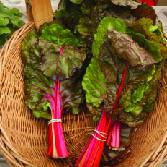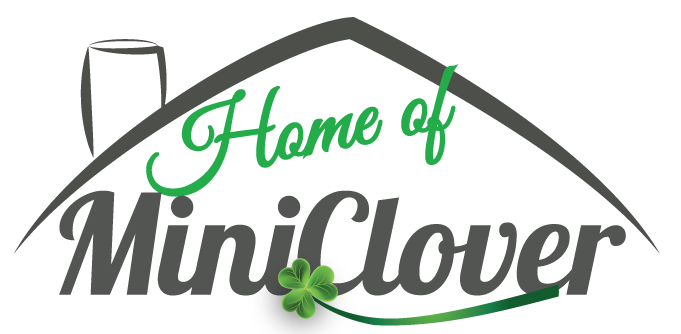-
CATEGORY ::
- All Seeds /
- All Pasture Seed /
- All Legumes






Partridge Pea Seeds
SEASON
Annual
USDA ZONES
3 - 9
HEIGHT
12 - 24 inches
BLOOM SEASON
Mid-summer to fall
BLOOM COLOR
Yellow
GROWTH RATE
Fast
ENVIRONMENT
Full sun
SOIL TYPE
Sand, loam, gravel, or clay, pH 5.6 - 7.3
FOLIAGE COLOR
Light green
About...
Partridge Pea (Chamaecrista Fasciculata) - A versatile annual that is perfect for a naturalized xeriscape setting or meadow! Grow Partridge Pea seeds for a variety of settings which include, wildlife habitat improvement, erosion control, and to beautify a natural setting with an attractive wild flower. It is very drought tolerant and perfect where water conservation is desired.MORE LEGUMES OPTIONS
Planting Directions
TEMPERATURE
55F
AVERAGE GERM TIME
14 - 28 days
LIGHT REQUIRED
Yes
DEPTH
1/4 inch
SOWING RATE
1/2 lb per 1,000 square feet
MOISTURE
Keep seed moist until germination
PLANT SPACING
If planting in rows, 3 feet apart
CARE & MAINTENANCE
Partridge Pea...less
Partridge Pea (Chamaecrista Fasciculata) - A versatile annual that is perfect for a xeriscape, naturalized setting or meadow! Grow Partridge Pea seeds for a variety of settings which include, wildlife habitat improvement, erosion control, and to beautify a natural setting with an attractive wild flower. Partridge Pea has large, showy, yellow flowers. Each flower is marked with red and is followed by a narrow pod. The flowers are a good source of nectar for bees and butterflies, and the pods produce flower seed which is a major food source for game birds and songbirds. Some of the wildlife that benefit from Partridge Pea seeds are prairie-chicken, ring-necked pheasant, mallard, grassland birds, deer, turkey, dove, pheasant, rabbit, and quail. The drought tolerant plants often grow in dense stands, producing foliage that furnishes cover for upland game birds, small mammals, small non-game birds, and waterfowl.
Partridge Pea is considered an important honey plant as well. It is quite attractive in regards to both its foliage and flowering habit. Its uses include erosion control along road banks and stream banks. It prefers full sun and average to dry conditions. The soil can contain sand, loam, gravel, or clay, and because it is a legume, it will add nitrogen to the soil. Partridge Pea is easy to grow from flower seeds, but can spread readily in dry, open situations as it self-sows. It also grows wild throughout the Midwest, eastern, and southern United States in zones 3 to 9 and is resistant to drought requiring low water usage.
Growing the seeds is not difficult. Partridge Pea seeds can be planted from late winter (February) to late spring (May). A cold treatment by refrigerating the Cassia seed for 30 days is helpful in aiding germination. After the cold treatment, broadcast the seeds in weed-free prepared soil. Rake the seed in and cover 1/4 inch. Keep the seeds moist. Established stands of Partridge Pea plants will disappear without some general maintenance. In spring, remove weeds, small brush, and old sod to expose the soil so that the flower seeds that have been self-sown can come in good contact with it.
Common Questions
Does partridge pea attract any pollinators?
Birds, bees and butterflies are all attracted to the blooms of partridge peas.
Does partridge pea need much water?
No, this plant has low water requirements once established.
How is this plant commonly used?
Partridge pea is great for meadows, prairie’s, natural settings, banks, slopes and cottage gardens.
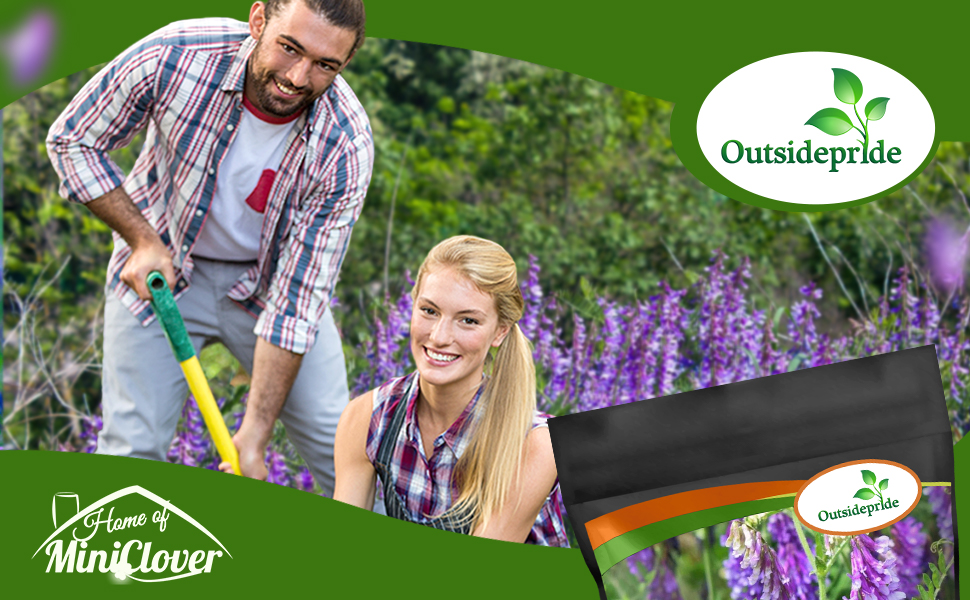
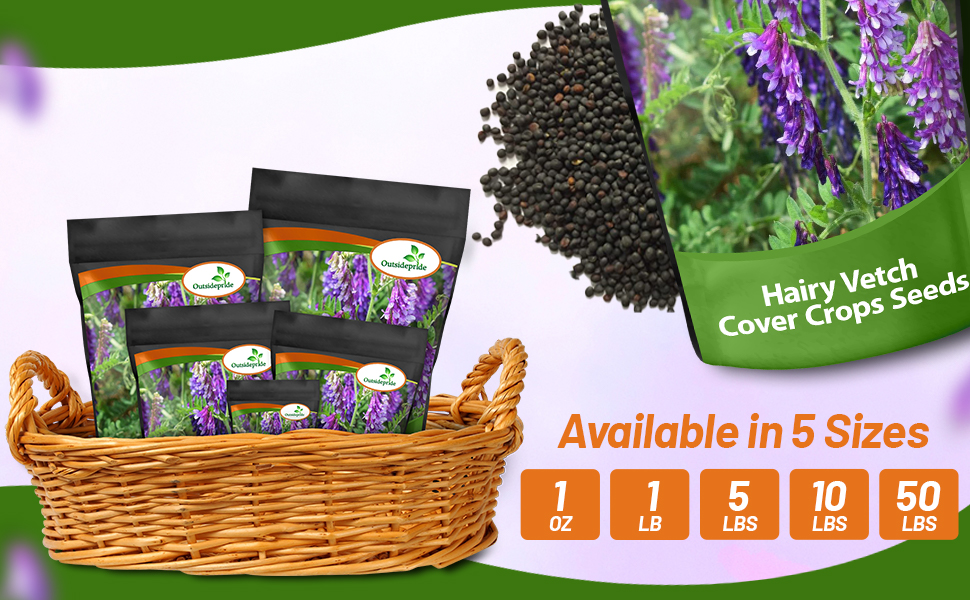
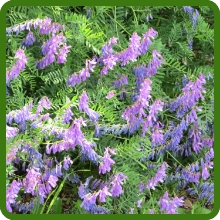
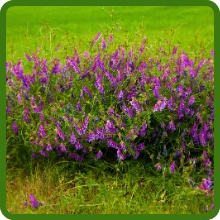

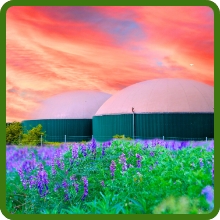
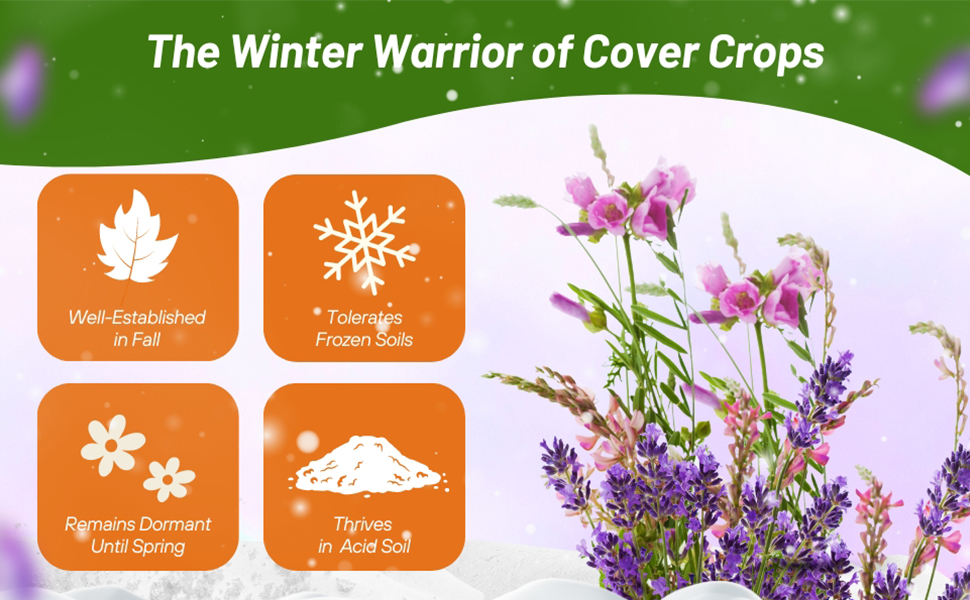
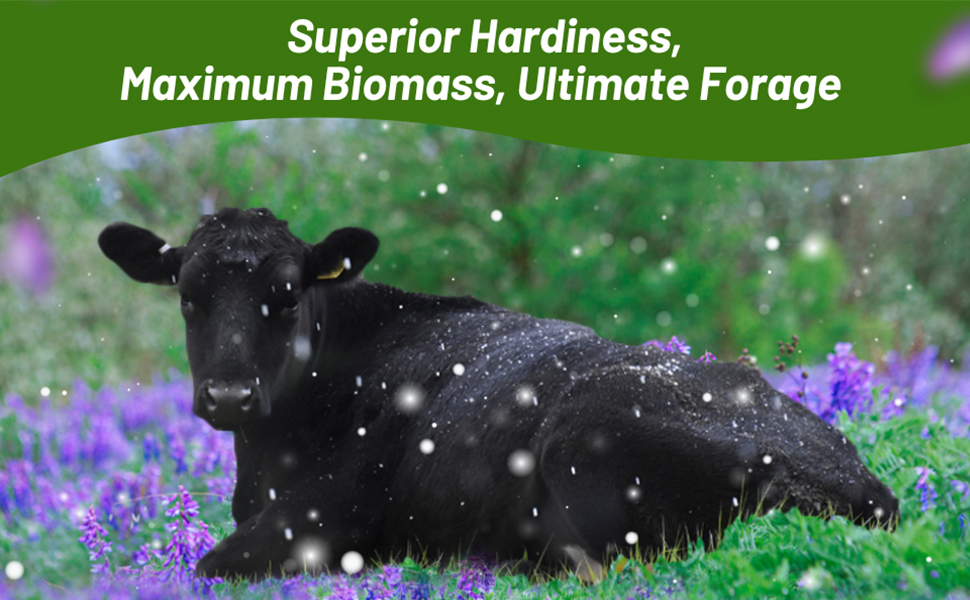
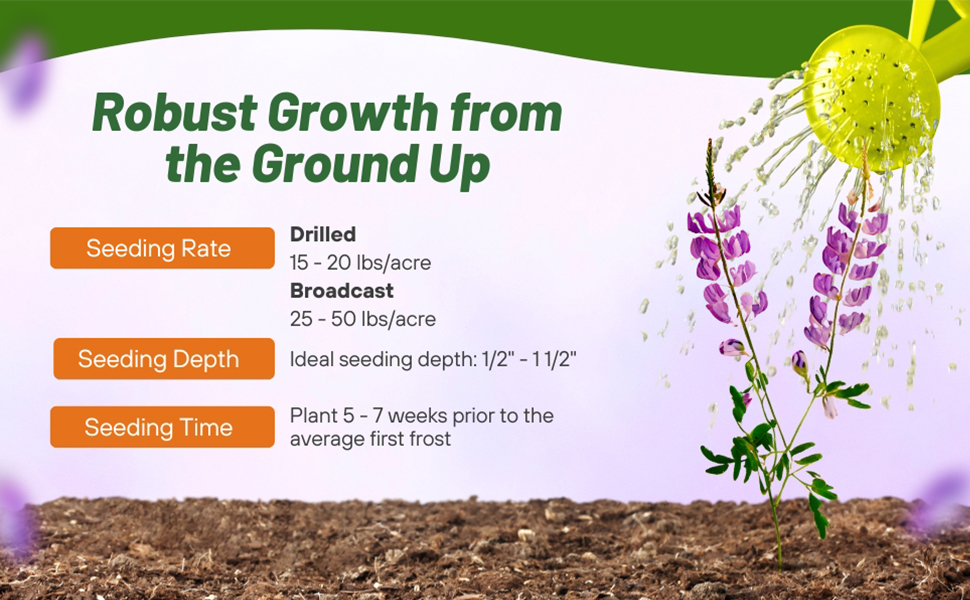
WinterKing hairy vetch has better winter hardiness equates to more biomass. More biomass provides increased forage for livestock, more biomass for cover croppers, and increased weed suppression for all. Those desiring high nitrogen-fixing legumes for green manure, forage grazing, wildlife and pollinator attractants should find WinterKing an improved option over other legumes that lack cold tolerance.
As an annual legume, hairy vetch may need to be terminated either mechanically or chemically when followed by a row crop. Some producers may find the late maturity of WinterKing reduces the potential for undesired seed propagation found in earlier maturing cover crop varieties. For livestock producers, WinterKing’s late maturity means more vegetative high value feed longer into the spring season.
WinterKing has shown potential to produce 150-200#N/acre, especially when allowed to reach maturity later in the season. This is beneficial for green manure as well as providing an extended high-protein source for grazing livestock throughout the full spring season.
Environmental preferences and Limitations
Hairy vetch tolerates cold well and is more winter-hardy than common vetch. If well-established in fall, it tolerates frozen soils, remaining dormant until spring. Warm spring temperatures bring rapid growth.
Hairy vetch seeds can be planted in soils with pH ranging from 4.9 to 8.2, but does best when pH is from 6.0 to 7.0. It can thrive in acid soils where clover and alfalfa do not grow well.
Hairy vetch does best on sandy or sandy loam soils but grows on most soil types if drainage is good. It tolerates some temporary flooding. Can withstand being flooded for long periods of time; however, stand quality and growth generally decline if there are long periods of flooding or saturated soils. It is somewhat shade-tolerant and more drought-resistant than the other vetches.
Inoculated Seed - We now offer hairy vetch seed which has been coated with an inoculant for better establishment. Nitrogen fixation is a one of the key values found in legumes and can only occur with the proper inoculation. Although many strains or Rhizobium may be present in the soil, all are not equally beneficial. With Nitro-Coat® each seed is inoculated with the correct Rhizobium strains and coated through a proven process that ensures a very high level of successful inoculation. A key to any successful establishment and early seed development is moisture. Nitro-Coat® is naturally water absorbent and helps attract soil moisture to the seed, getting your stand established quickly. This coating process which Outsidepride utilizes, assures that only the top-performing and crop-specific rhizobia will be applied to ensure your clovers reach maximum nodulation, stand establishment, and yield potential. With Nitro-Coat® each seed is inoculated with the correct Rhizobium strains and coated through a proven process that ensures a very high level of successful inoculation. The weight of the hairy vetch seeds will contain approximately 34% coating material that contains the inoculant and water holding material for better establishment and viability of the seed. There is no difference in the seeding rates between the coated and raw seed due to the increased germination and viability of the bulk hairy vetch seeds that are coated and inoculated. This coating material is not OMRI certified.
Austrian winter peas are a cool-season annual legume which can make a very attractive food plot on their own or as an addition to a seed mixture planted in the fall to attract deer. Easy to grow and quick to germinate, winter peas are very similar to garden peas and have the same nitrogen-fixing abilities which reduces the amount of fertilizer needed in your garden.
Austrian Winter Peas are also very good for cover crops and green manure crops, building tilth and adding organic matter and thus humus to the soil. Peas like well drained and fertile loam soils. Field peas are used as a winter annual in the South and as a spring annual in the North for soil improvement and for forage. Austrian winter peas are generally grown with a small grain for pasture, hay or silage. They can be used as a cover crop or green manure crop. This cover crop seed does not tolerate high water table or any substantial flooding.
These peas have a vine-like growth that can reach lengths of 3 to 5 feet when planted in fertile soil. Winter peas are highly nutritious and extremely digestible to deer. They carry a protein level between 20 and 30 percent. Both the seed, stem and leaves are browsed by deer. Foliage color is a pale green, and the plant produces pink blooms. Austrian winter peas have moderate drought tolerance but have good winter hardiness.
Seeding Rate
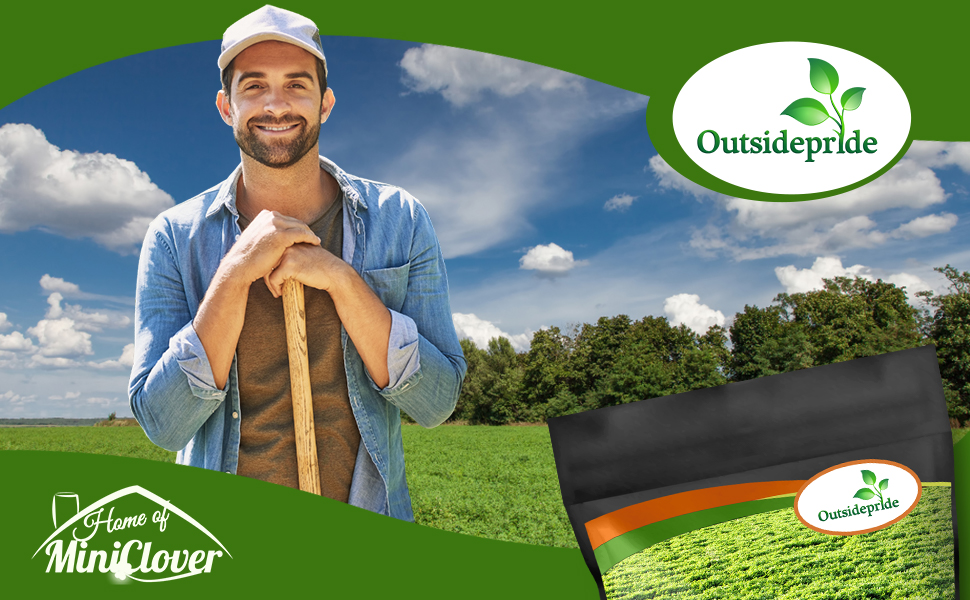
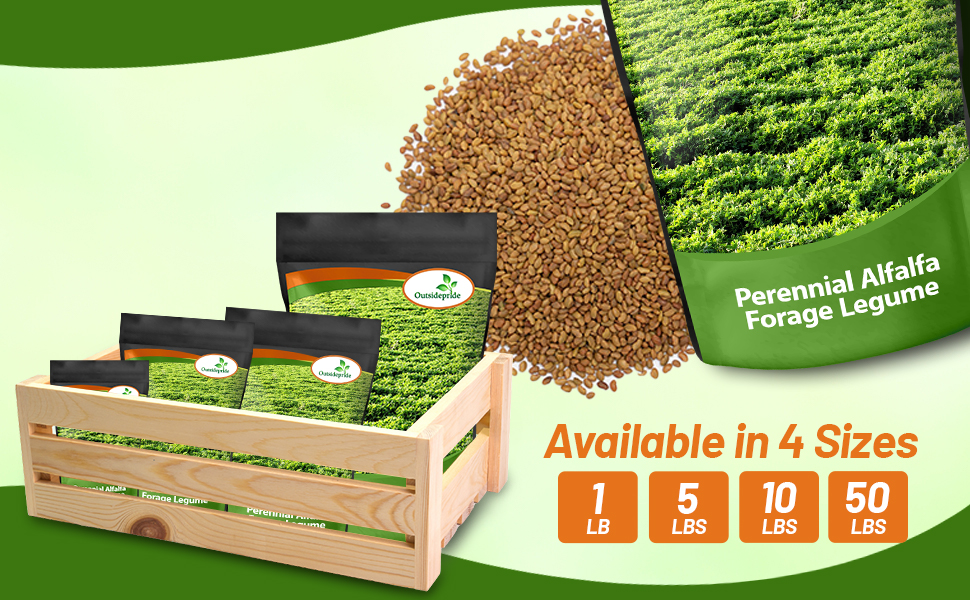
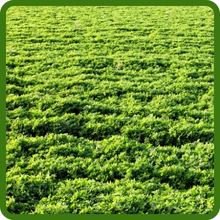
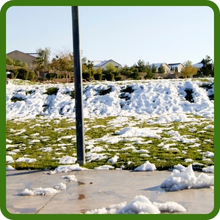
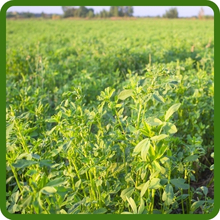
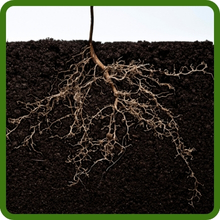
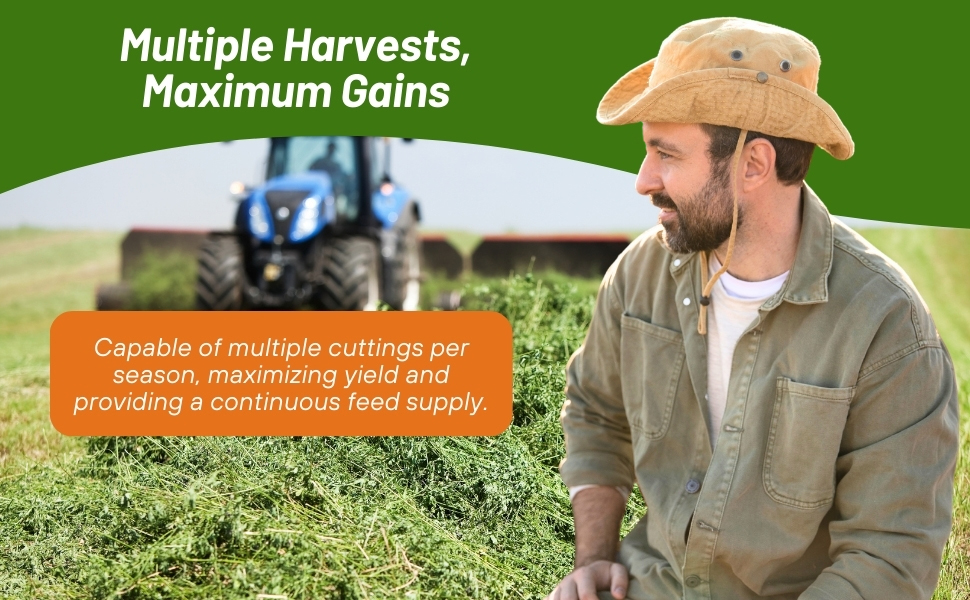
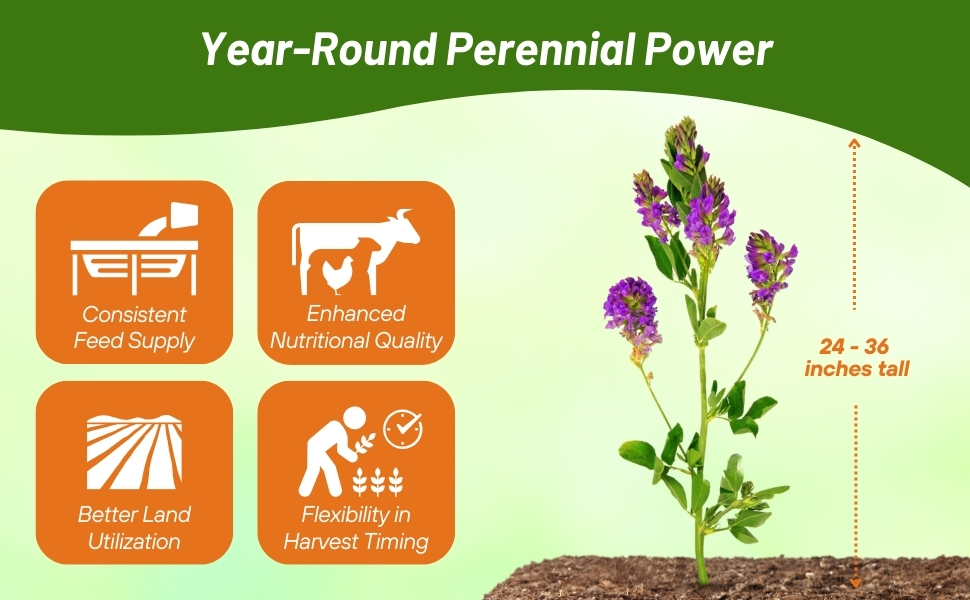
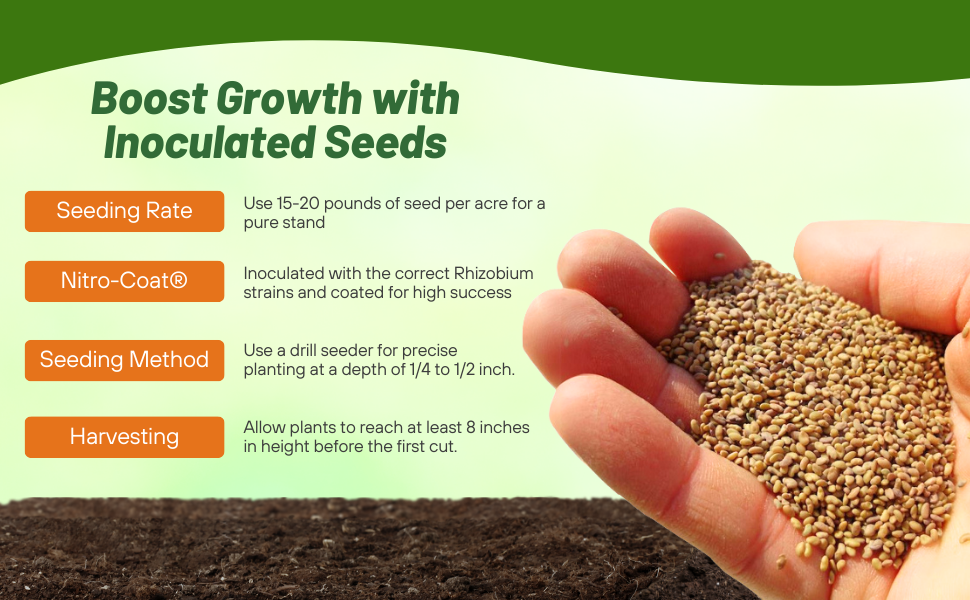
Vernal alfalfa has been the standard of the industry for many years. It exhibits good winter hardiness, has moderate re-growth after cutting, is fine stemmed and has dark green leaves. Vernal alfalfa is used mostly for hay production in medium rotation applications. It was developed by the University of Wisconsin and released in 1953.
Here are some of the outstanding features of Vernal alfalfa:
- Produces high yields even on fields where root rots are a problem
- Uniquely winterhardy, a full season variety with the winterhardiness of varieties adapted to the far north
- Wide spectrum pest resistance decreases yield fade in later stand years
- Very high yield potential, top performer in University yield trials
- Resists stem nematode problems common to lighter soils
- Very fast recovery and very good frequent cutting tolerance
Establishment
Use a soil test measure as a guide to check your pH and nutrient status several months before seeding alfalfa seeds. Apply lime and fertilizer as needed. Your pH levels should be 6.5-7.0. An ideal soil bed is moist, fertile and firm. Vernal prefers crumbly silt loam to sandy loam textures but alfalfa seeds will grow well on most deep, well-drained soils with adequate internal and surface drainage. Alfalfa will die if the soil is saturated for an extended period.
Plowing will result in a clean, firm seedbed, but you have to plant when the soil is not too dry or too wet. Plowing may bring rocks to the surface and the field would be more subject to soil erosion. Discing or harrowing requires less time than plowing/tilling, but may not rid the seedbed of weed seeds, diseased plant parts or herbicide residues.
No-till seeding of alfalfa seeds can be completed on a wider range of soil conditions and rocks are left below the surface and the field is far less susceptible to soil erosion. You also save time, fuel and power requirements.
Plant alfalfa seeds 1/4" to 1/2" deep on medium to heavy textured soils and plant at least 1/2" on sandy soils either in the spring or late summer-early fall.
Management
For maximum yields, it is important to have 20-30 plants per square foot during the seedling year for protection against weed competition. Do not harvest alfalfa seeded in late summer until the following spring. Allow new seedlings to start to bloom before the first harvest. Cut three-four times a year when stand is 25% flowered.
Seeding Rate
15 to 20 lbs/acre.
Inoculated Seed - Our Vernal alfalfa seed has been coated with an inoculant for better establishment. Nitrogen fixation is a one of the key values found in legumes and can only occur with the proper inoculation. Although many strains or Rhizobium may be present in the soil, all are not equally beneficial. With Nitro-Coat® each seed is inoculated with the correct Rhizobium strains and coated through a proven process that ensures a very high level of successful inoculation. A key to any successful establishment and early seed development is moisture. Nitro-Coat® is naturally water absorbent and helps attract soil moisture to the seed, getting your stand established quickly. This coating process which Outsidepride utilizes, assures that only the top-performing and crop-specific rhizobia will be applied to ensure your clovers reach maximum nodulation, stand establishment, and yield potential. With Nitro-Coat® each seed is inoculated with the correct Rhizobium strains and coated through a proven process that ensures a very high level of successful inoculation. The weight of the alfalfa seeds will contain approximately 34% coating material that contains the inoculant and water holding material for better establishment and viability of the seed. There is no difference in the seeding rates between the coated and raw seed due to the increased germination and viability of the bulk alfalfa seeds that are coated and inoculated. This coating material is not OMRI certified.
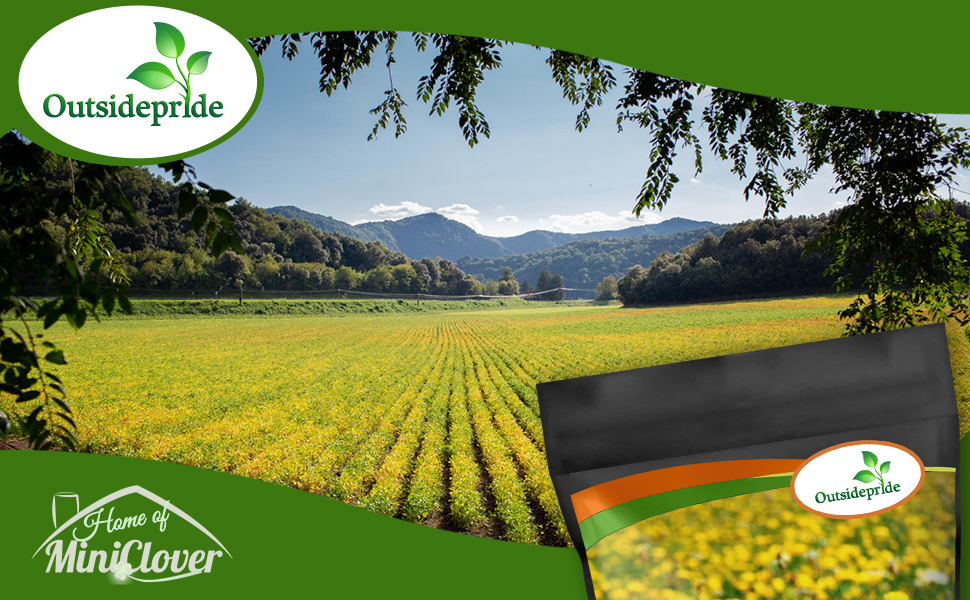
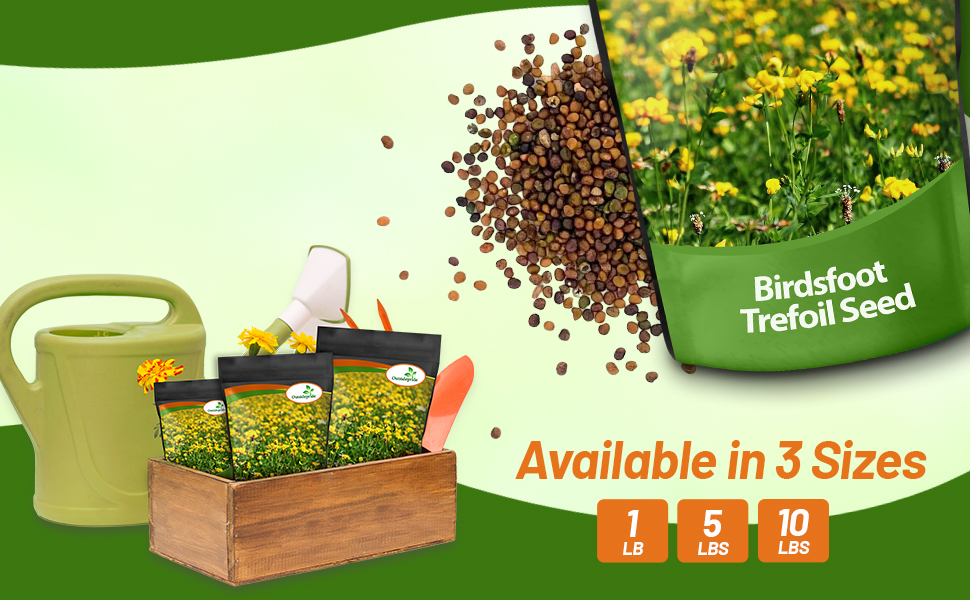
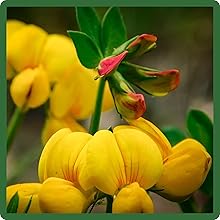
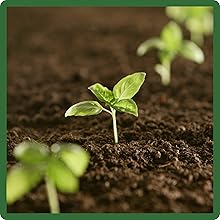
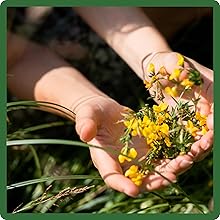
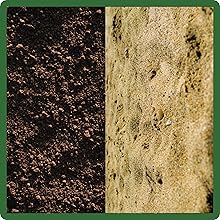

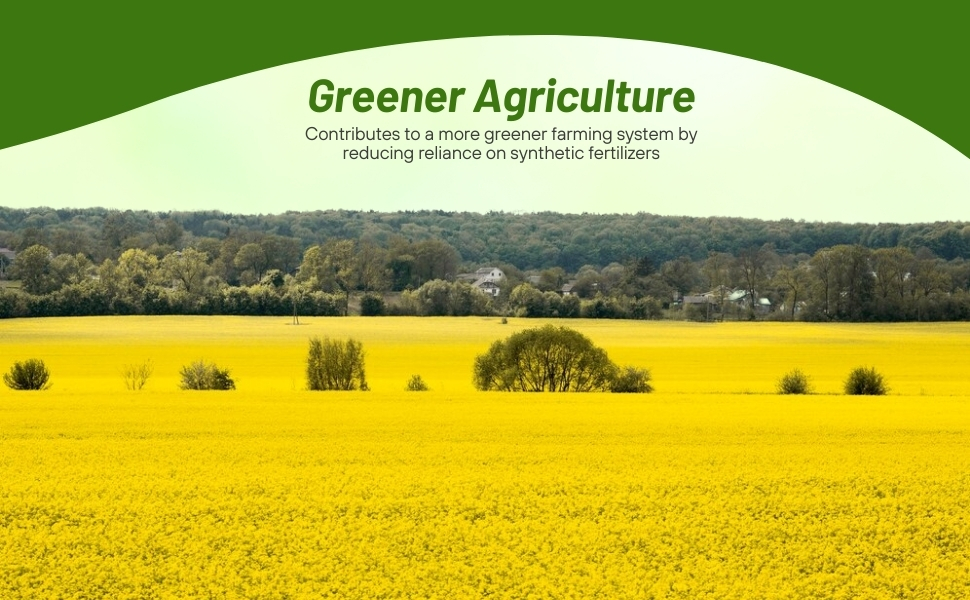
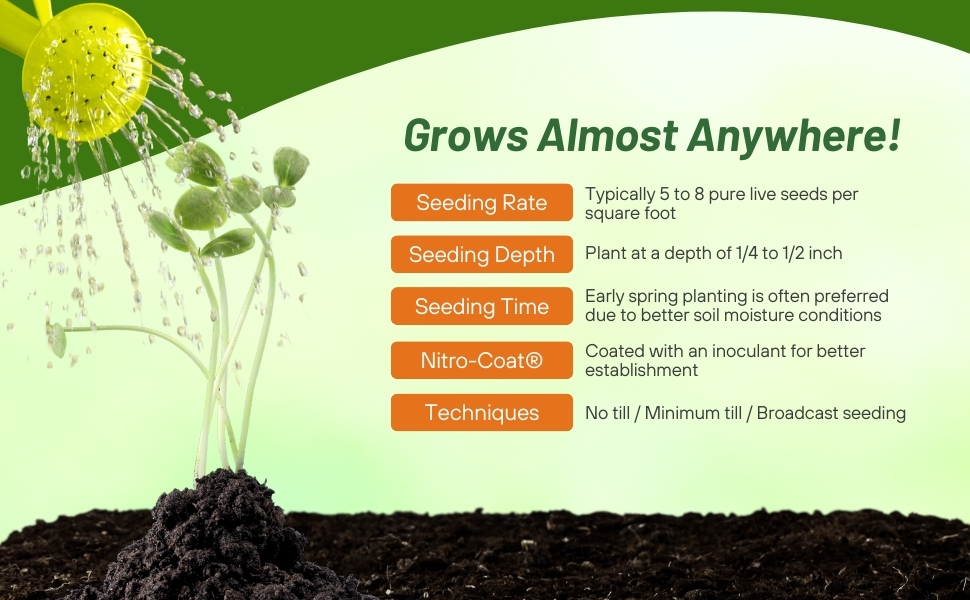
Also known as "broadleaf birdsfoot trefoil," this long-lived, deep-rooted perennial forage legume is used for pasture, hay and silage. It grows on many different soil types, from sandy loams to clays. It accepts poorly-drained, droughty, infertile, acid or mildly alkaline soils. Most productive on fertile, well-drained soils with a pH of 6.2-6.5 or higher.
The nutritive value equals that of alfalfa, and there is no apparent problem from bloat, evern where pure stands are grazed.
Birdsfoot trefoil should be seeded with grasses for optimum forage production such as: timothy, smooth brome, orchardgrass, tall fescue, and perennial ryegrass. Also attracts deer, turkey, and rabbit.
Seeding Rate
5 to 8 lbs/acre.
More Information on Birdsfoot Trefoil
Species of Lotus are widely distributed throughout the world. Birdsfoot trefoil (Lotus corniculatus) is grown in the northeastern and north-central states and in the Pacific Northwest coastal and intermountain areas. It is suited to clay soils and areas that are too wet or too acid for alfalfa production.
Primary Use
Birdsfoot trefoil is a non-bloating legume that is suitable for use in permanent pastures or for use as a hay crop, either alone or sown in combination with grasses. When used for grazing, birdsfoot trefoil is used to best advantage in a rotational grazing system. when grown for hay on land that is suitable for alfalfa, birdsfoot will produce considerably less forage than alfalfa. For this reason, birdsfoot trefoil should be used only in areas that are not suitable for alfalfa production because of their acidity, poor drainage, or low fertility.
Establishment
Weak seedling vigor is the major problem encountered when establishing stands. Because birdsfoot trefoil has a relatively slow growth rate and small seed size, good seeing practices and weed control are essential. Seeding rates for various mixtures are indicated in the table. Seed should be covered slightly or planted inch deep. Planting seed above a band of fertilizer (band seeding) but not in contact with the fertilizer will enhance seedling vigor. Planting can take place in the early spring or late summer. Early spring planting is preferable because of ample soil moisture for germination and seedling development.
Fertility and pH Requirements
One of the major advantages of birdsfoot trefoil is its tolerance to low fertility and to low soil pH. However, maximum forage growth will occur on fertile soils with a pH of 6.0 to 6.2. A moderate application of phosphorus and sulfur at planting based on soil test data, will provide for good growth.
Management
Early spring or continuous grazing of birdsfoot trefoil will weaken and eliminate a stand. Rotational grazing should be used, allowing animals to graze when the first flowers appear. For use as pasture, this will allow two grazing periods on dryland pastures west of the Cascade Mountains or three grazing periods on irrigated land.
If used as a combination of hay and pasture, a hay crop can be taken at early bloom (June) and the regrowth grazed at first flower. On irrigated areas, two regrowths can be expected and can be used as hay or pasture. The third hay crop, or grazing period, can be expected in September. Regrowth can be grazed in October and November.
Birdsfoot trefoil is persistent and has a long life when managed properly.
Grazing
The most likely causes of loss of stand are continuous, hard grazing; competition through shading from too much grass and weeds; and excessively poor drainage such as standing water. Allowing some seed production during lenient grazing in summer will thicken the stand as the shattered seeds germinate quickly with irrigation or rain.
Diseases and Insect Pests
It is relatively free of insect and disease damage, and is very winter hardy once established.
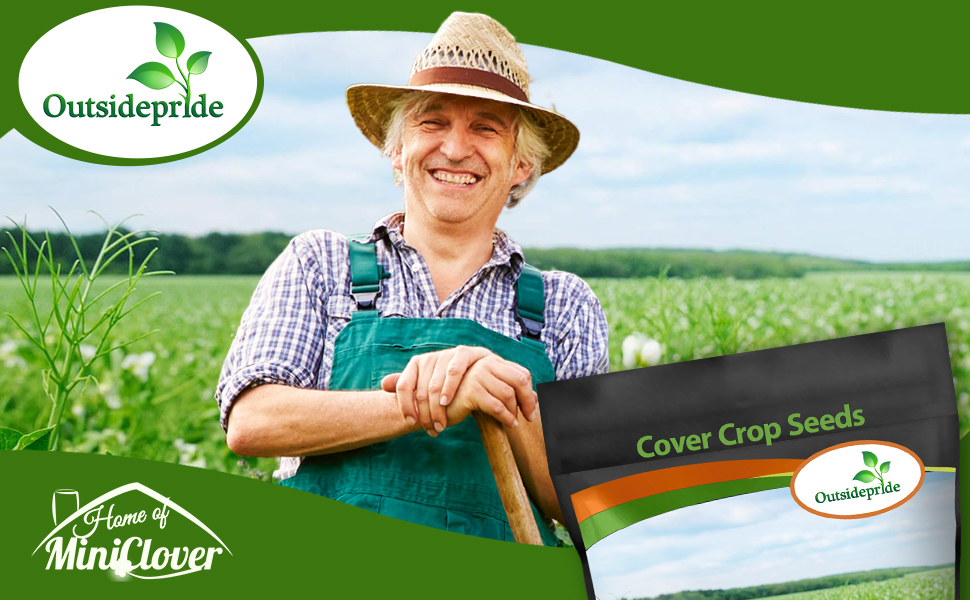
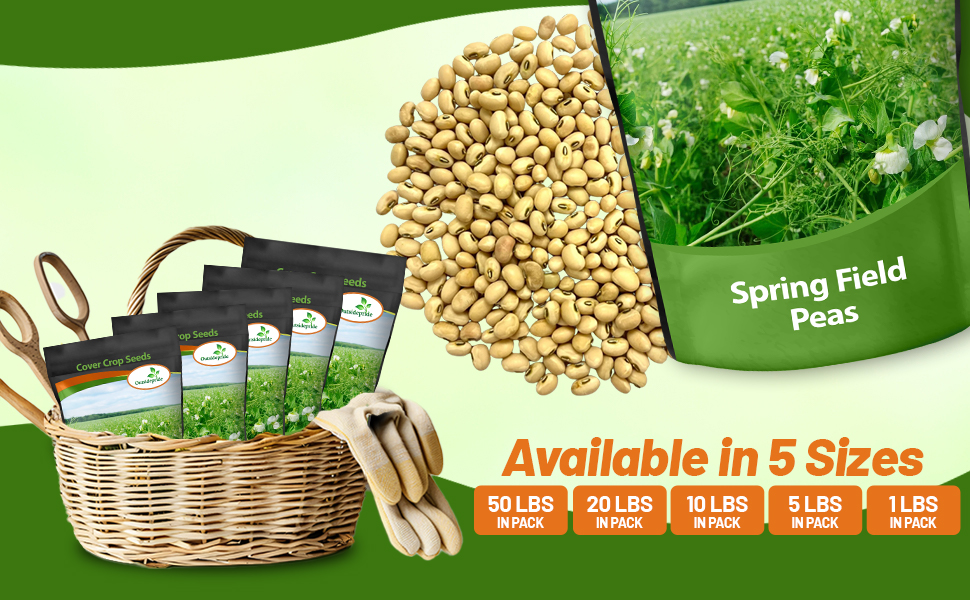
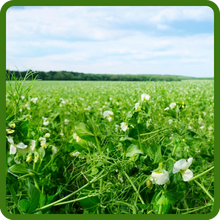
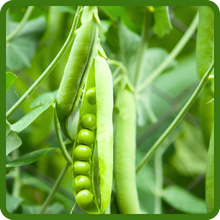
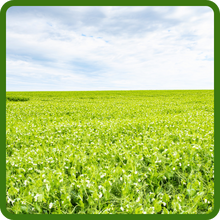
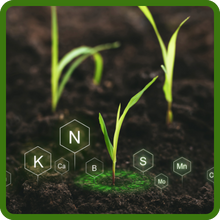
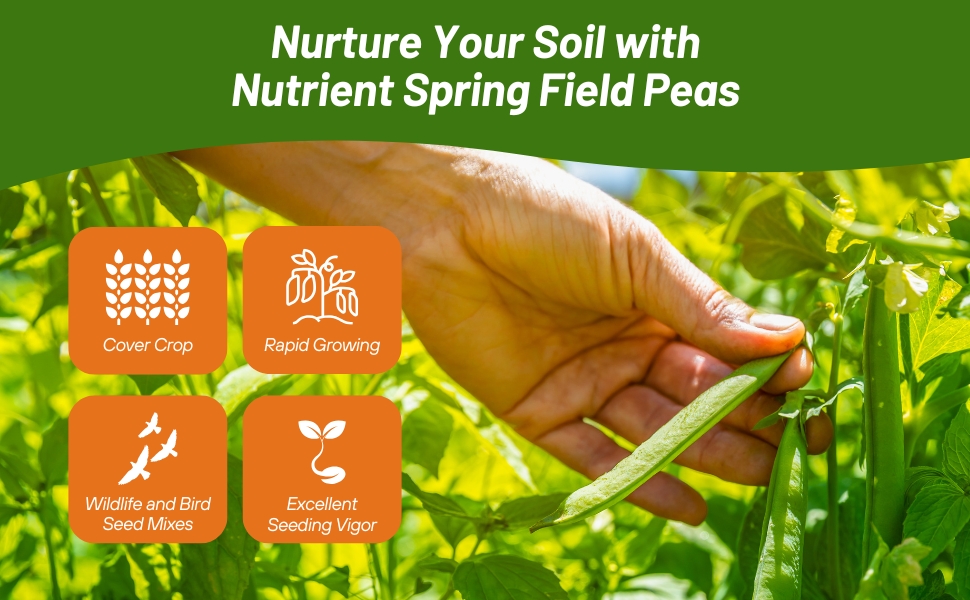

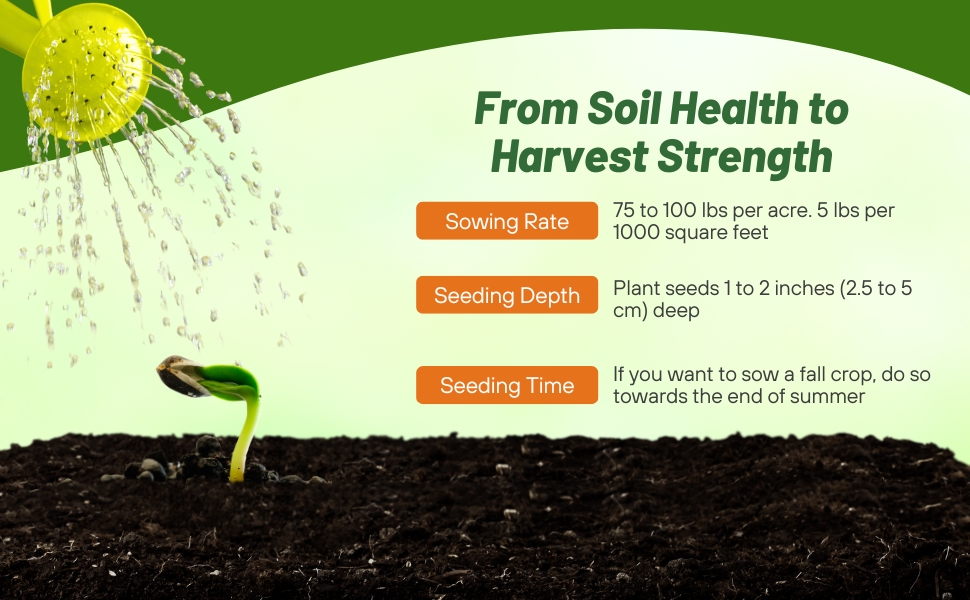
Plant Dundale spring peas as soon as the fields are able to work and expect field peas to grow rapidly in the spring. Seedlings are able to tolerate frost in the low 20s and will produce a new shoot if frost damage does occur. The plants will flowers in approximately 45 days and are ready for harvest in about 60 days.
Field peas can be mixed with oats, barley or triticale and are an excellent source of protein forage. Research has shown that field pea is an excellent protein supplement in pigs, cattle and poultry rations. They are also excellent in wildlife mixes and bird seed mixes.
Spring field peas are also a good source of green manure for the soil. The thick foliage breaks down easily and enhances the quality of the soil. Field peas also fixate nitrogen and can greatly cut down the need to add fertilizers to the soil. Plant pea seed at a depth of 1 - 2 inches.
- High forage yields
- Mixes well with cereal grains
- Great leaf to stem ratio
- Excellent seedling vigor
- Large amounts of quality biomass
Seeding Rate: 75 to 100 lbs per acre. 5 lbs per 1,000 square feet.
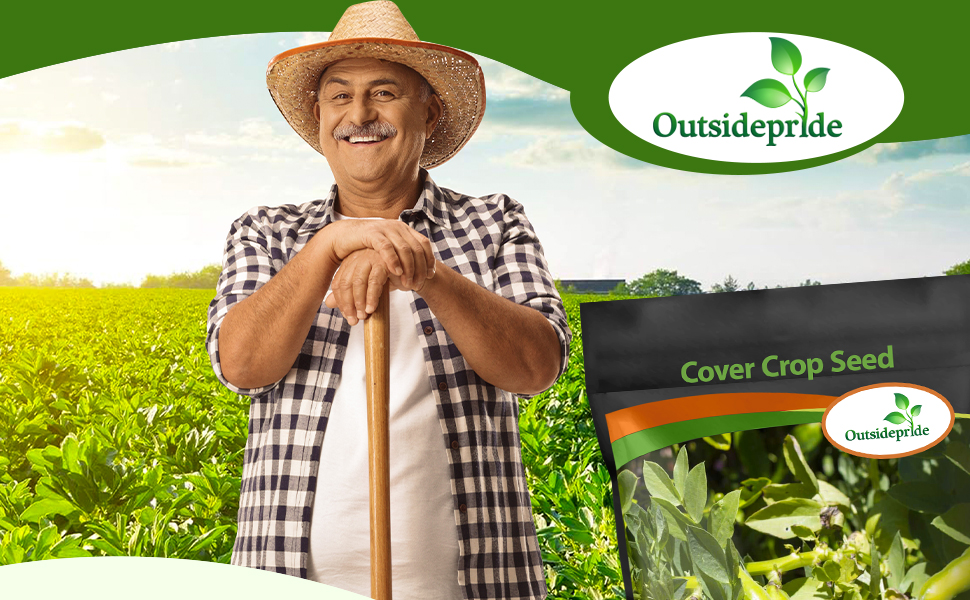
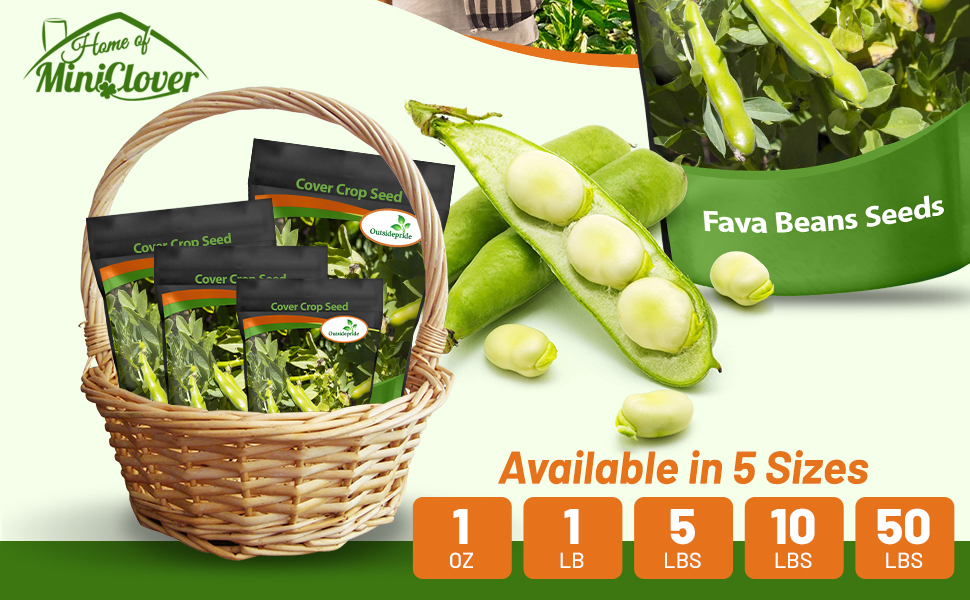
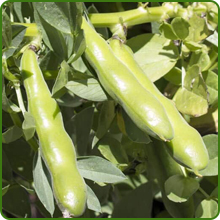
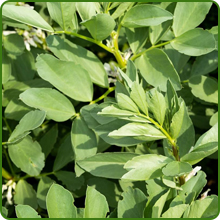
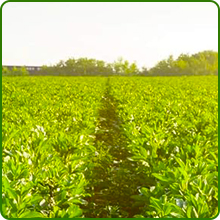
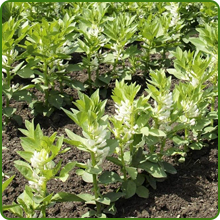
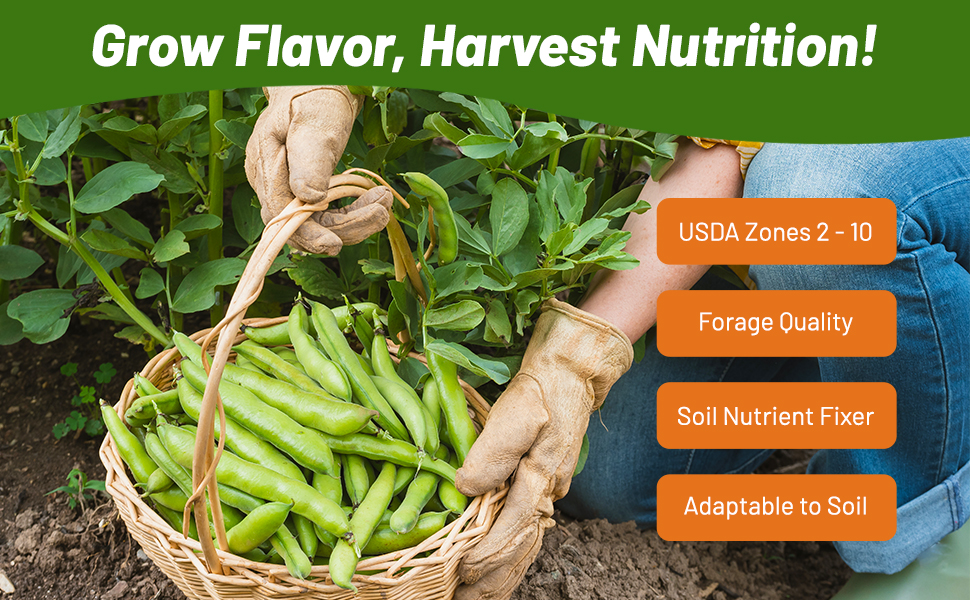
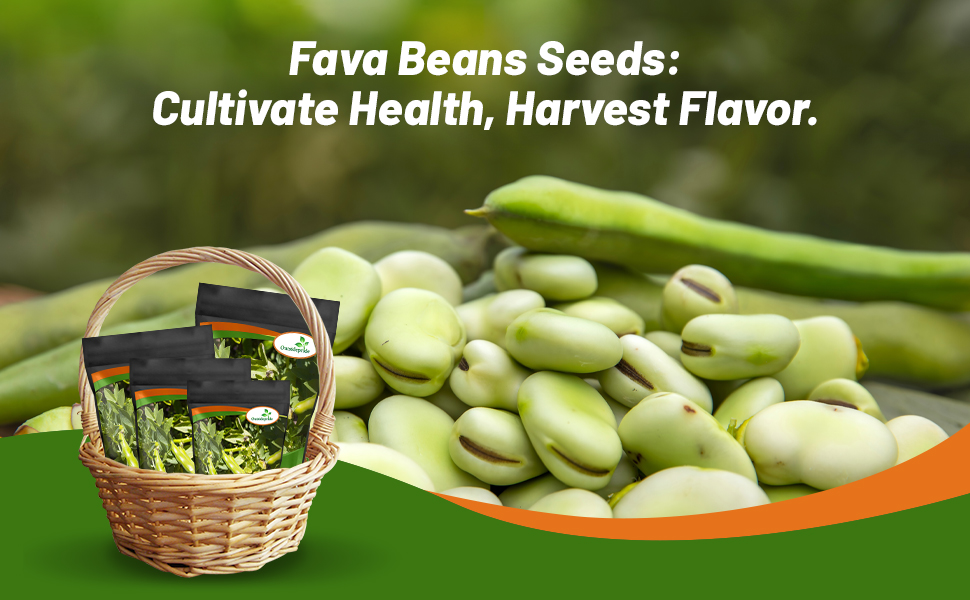
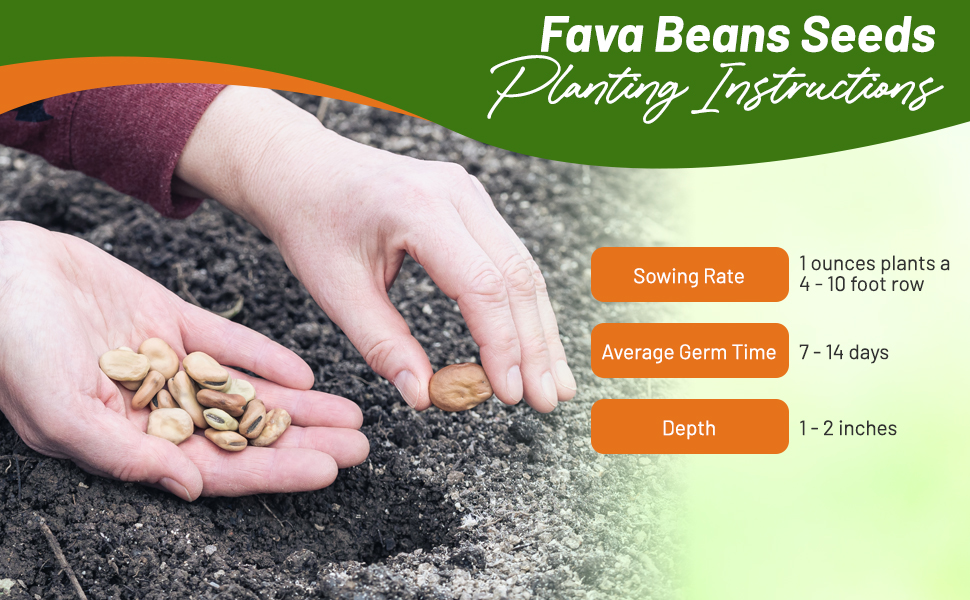
Fava Beans (Vicia Faba) - A relative of vetch, fava beans have erect, coarse stems and large leaves that grow into a bushy plant. This annual legume is also known as broad bean, field bean, horse bean, and Fababean. There are many varieties, even one for human consumption which is called Windsor bean. The cultivation of the bean dates back to early history where it is native to the Mediterranean region, especially Italy and Iran. In North America, Canada is the largest producer of Fava bean since they produce best in cool summer climates.
Our Fava beans are forage quality. They are not for human consumption.
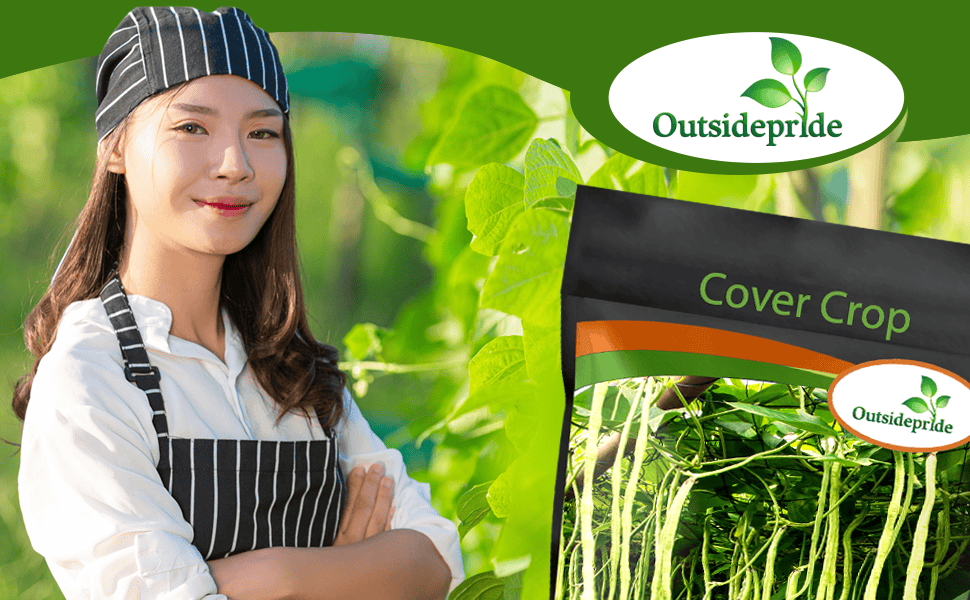
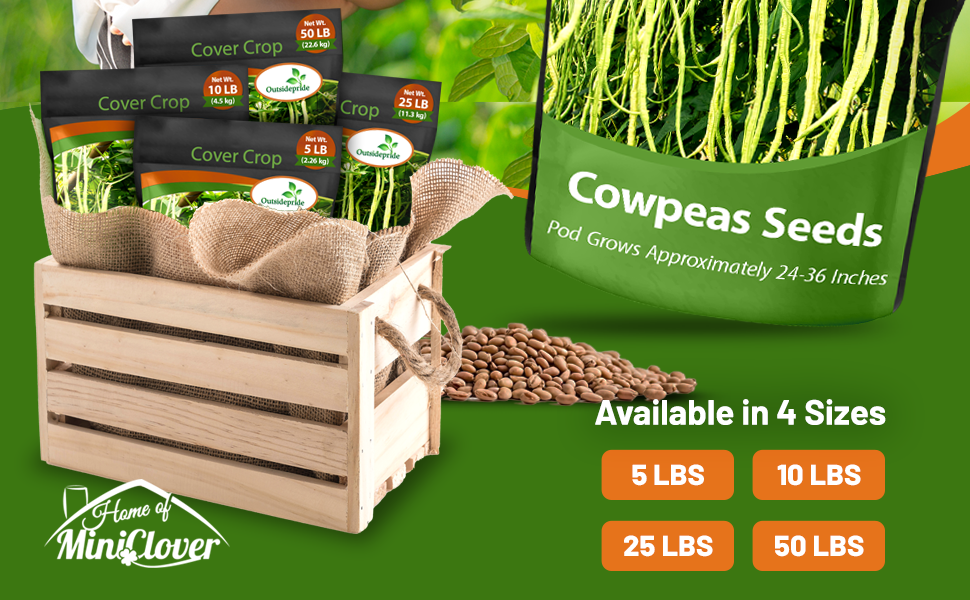

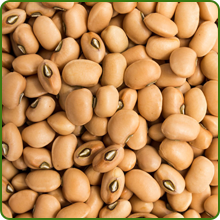
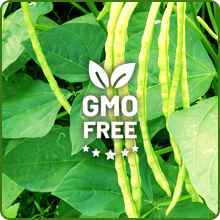
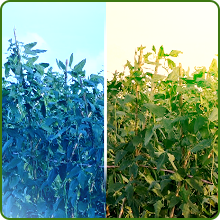

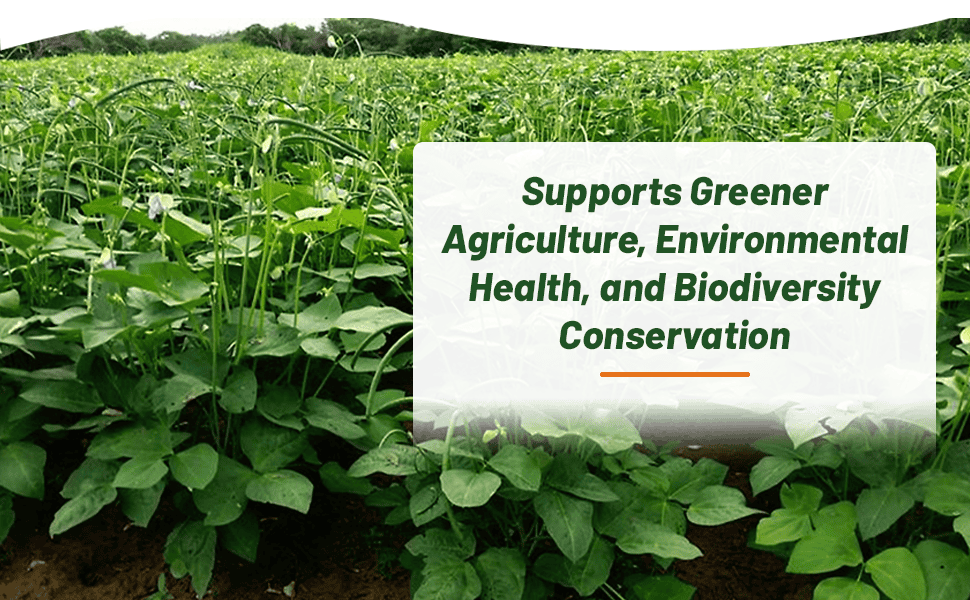
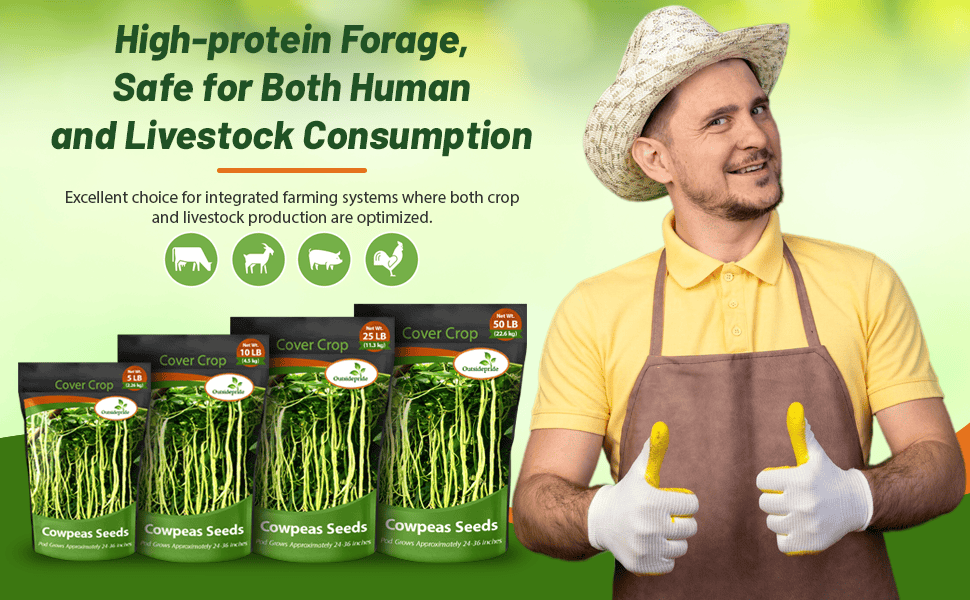
Cowpeas (Vigna Unguiculata) - Cowpeas grow 24 - 36 inches tall and are very heat and drought tolerant. They are very hardy, making them an excellent choice for food plots in the southern United States. Deer, pheasant, turkey, quail and other wildlife eagerly seek out the foliage and grain produced by cowpeas as they grow to maturity. Other animals such as: cattle, hogs, poultry, goats and other upland game birds will also enjoy feeding on cowpeas.
Cowpeas are the most heat loving legume found in the United States. They thrive in hot, moist climates, but are also very drought tolerant. Adapted to a wide range of soil types. Commonly used by farmers for silage and as a cover crop, but also widely planted as a high protein forage. Cowpeas are adapted to a wide range of soils, but prefers well drained soils with a pH between 6.0 - 7.0. Like all cowpeas, they can be consumed by humans in the form of snap beans and dry beans.
Cowpeas are perennial in USDA Zones 7 - 10, but are often grown in the midwest as an annual in USDA Zone 5 and 6.
Seeding Rate: 30 - 90 lbs per acre
Planting Depth: 1/2 - 1 inch deep
















